
The history of Heidelberg, a charming city on the Necker River in Southwest Germany, may date back as far is the 5th century BCE. But its reputation today rests in part on Heidelberg University founded in 1386. The university is the oldest university in Germany, and romanticized stories of student life are better known than its academic reputation. In the 19th century, the non-academic activities of drinking, academic fencing duels, and flirtations with young ladies kept young students at least as busy as any coursework.
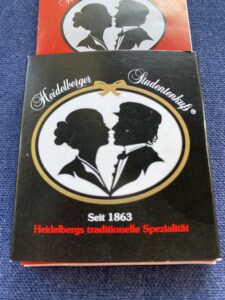
The Student Kiss
In 1863 chocolatier and confectioner Fridolin Knösel had a cafe that was popular with university students as well as young ladies attending the local finishing school. Governesses kept a sharp eye on the young ladies and discouraged any interactions between between their charges and the eager young men who came to the cafe.
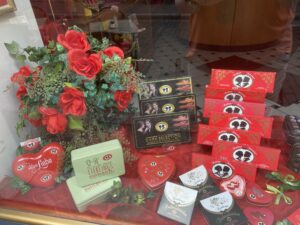
Knösel saw the longing glances between the young people and created the Student Kiss, a special chocolate with a nougat cream filling, a waffle floor, and a dark chocolate glaze. The “Kiss” could be given as a token of affection that did not alarm the ladies’ chaperones. If a young lady accepted a Student Kiss from the university student, she accepted his approach. If she returned it, alas, his interest was not returned.
Today the Knösel family still owns Heidelberger Studentenkuss in Old Town, now presided over by Lisette Knösel. The shop sells a variety of Student Kiss confectionary for friends and lovers.
Academic Fencing
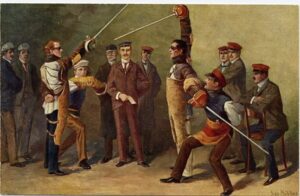
Students became members of clubs known as corporations that met in formal fencing matches known as Mensur. In Mensur, there was no winner or loser. Participants stood their ground and fenced at an arm’s length, attempting to strike their opponent’s face or head. The recipient could not flinch or duck in an effort to avoid the blow. The goal was to endure the strike without expression. The strike usually left a scar called a schmiss. The schmiss was a mark of honor proving a young man’s strength of character. To insure this unique badge of courage could not be missed, students often pulled the wound apart or poured red wine into it to prevent healing.
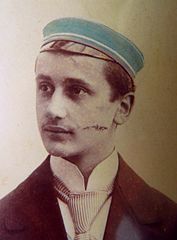
Two days a week were devoted to student duels with three duels on each day. Each duel lasted fifteen minutes, but there were breaks. For example, after being wounded the dueler sat down while a doctor applied bandages. The entire duel lasted about half an hour.
Mark Twain visited Heidelberg in 1878. Observing the duels from the Hotel Die Hirschgasse, Twain commented:
“I had seen the heads and faces of ten youths gashed in every direction by the keen two-edged blades, and yet had not seen a victim wince, nor heard a moan. Such endurance is to be expected in savages and prize-fighters, for they are born and educated to it; but to find it in these gentlemanly bred and kindly natured young fellows is matter for surprise.”
The Student Prince
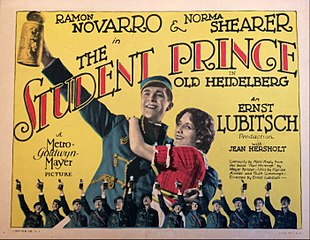
The romance of Kisses and Dueling is on full view in Sigmund Romberg’s operetta The Student Prince. The tale of happy student days in Heidelberg tells the story of a fatherless prince in a mythical kingdom who goes to Heidelberg University and finds unexpected love.

The play opened on Broadway in 1924 and was the longest running show during the 1920s. During the time of American Prohibition, audiences especially enjoyed the song Drink, Drink, Drink.
In 1927, The Student Prince became the Student Prince of Old Heidelberg in a silent movie. The story took on yet another life in a 1954 movie, featuring Mario Lanza as the male lead’s singing voice.
The flavor of the popular 1954 movie is captured in the movie trailer.
🍺 🍺 🍺
View of Heidelberg & River Necker. Photo by Author.
A Small Student Kiss. Photo by Author.
Front Window of Heidelberger Studentenkuss . Photo by Author.
Auf die Mensur by Georg Mühlberg. 1900.
Adolf Hoffman-Heyden with fresh dueling wound. 1896.
1927 Lobby Card for Student Prince.
Mario Lanza in Toast of New Orleans Trailer. 1950
Mark Twain. Chapter 6. A Tramp Aboard. American Literature.

Sandra Wagner-Wright holds the doctoral degree in history and taught women’s and global history at the University of Hawai`i. Sandra travels for her research, most recently to Salem, Massachusetts, the setting of her new Salem Stories series. She also enjoys traveling for new experiences. Recent trips include Antarctica and a river cruise on the Rhine from Amsterdam to Basel.
Sandra particularly likes writing about strong women who make a difference. She lives in Hilo, Hawai`i with her family and writes a blog relating to history, travel, and the idiosyncrasies of life.

